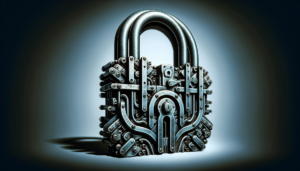
In the video “Situational Awareness Tips From a Seal Team 6 Warrior | Urban Survival,” Don Mann, a member of Seal Team 6, shares valuable tips for staying safe in outdoor or urban environments. Throughout the video, he emphasizes the importance of trusting your intuition, constantly scanning your surroundings, and being aware of potential dangers. Mann suggests checking crime statistics for unfamiliar areas, noting potential exit routes and cover areas, and paying attention to body language and bulges in people’s clothing. He also highlights the need to maintain a confident and aware posture at all times and to discuss these tips with others to promote vigilance. The video aims to educate viewers on situational awareness and its importance in avoiding danger and threats.
Introduction
Situational awareness is a crucial skill to possess, especially in urban environments where potential dangers lurk around every corner. It involves being fully present and aware of your surroundings, constantly scanning for any signs of threat or danger. In this article, we will explore the importance of situational awareness in urban survival and provide tips and strategies to help you stay safe and prepared.
Trust Your Intuition
One of the key aspects of situational awareness is trusting your instincts. Your intuition can often sense danger before your conscious mind is able to process it. Pay attention to any gut feelings or uneasiness you may experience in certain situations. If something doesn’t feel right, it probably isn’t. When your intuition sends you warning signals, it’s important to listen and take action accordingly.
Constantly Scan the Area
Maintaining a visual awareness of your surroundings is essential for situational awareness. Instead of walking with your head down or being engrossed in your smartphone, make it a habit to regularly scan your environment. Look for potential dangers, suspicious behavior, or any changes in your surroundings that might require your attention. By actively scanning the area, you can identify threats or issues before they escalate.
Be Aware of Potential Dangers
In order to maintain situational awareness, it’s crucial to be vigilant and observe the people and environment around you. Pay attention to body language, as it can often indicate a person’s intentions. Watch out for bulges in clothing, which may suggest that someone is carrying a weapon. Additionally, try to understand the general “mood” of a place. Are there any arguments or tensions between individuals or groups? By being aware of these signs, you can better assess potential threats.
Check Crime Statistics
Before venturing into unfamiliar areas, it’s wise to check crime statistics for that particular location. There are websites available, such as NeighborhoodScout.com, ADT Crime Maps, and Crimeat, where you can gather information about crime rates based on specific zip codes. By being informed about the safety of an area, you can adjust your level of vigilance accordingly and take necessary precautions.
Identify Exit Routes and Cover Areas
When you enter a new place, take note of the various exit routes available. Familiarize yourself with fire exits, as they may be used less frequently and can provide you with a quick escape in case of an emergency. Additionally, identify areas that can provide cover and protection if needed. By having these escape routes and cover areas planned out in advance, you can react quickly and effectively in high-pressure situations.
Maintain a Confident and Aware Posture
Your body language plays a significant role in situational awareness. Displaying a confident and alert posture can deter potential threats and signal to others that you are aware of your surroundings. Stand tall, make eye contact, and avoid appearing distracted. By maintaining a confident and aware demeanor, you are less likely to become a target for opportunistic criminals.
Educate and Promote Vigilance
Situational awareness is a skill that should be shared and taught to others. By discussing situational awareness tips with friends, family, and colleagues, you can help spread awareness and knowledge of its importance. Encourage others to be vigilant and observant of their surroundings. By creating a more vigilant community, you contribute to a safer environment for everyone.
Understand the Color-Coded System
One effective way of evaluating and responding to potential threats is by utilizing the color-coded system. This system, developed by Colonel Jeff Cooper, categorizes your level of awareness into different conditions. Condition white refers to a total lack of awareness, while condition yellow represents a relaxed state of alertness. Condition orange signifies a heightened level of alertness in response to a specific threat, and condition red indicates immediate combat readiness. Lastly, condition black refers to a state of panic and loss of control. Understanding and practicing this color-coded system can help you assess your level of awareness in different situations and respond accordingly.
Conclusion
In today’s world, situational awareness is more important than ever. By maintaining constant awareness of your surroundings, trusting your instincts, and taking proactive measures, you can greatly enhance your personal safety in urban environments. Remember to check crime statistics, identify potential exit routes and cover areas, and promote vigilance within your community. By prioritizing situational awareness, you are better equipped to navigate through potential dangers and threats, ensuring your own well-being.







